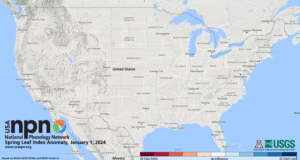By Kaylee Gabalis ‘27
With the passing of Halloween this year, you may ask yourself the origins of this century-old tradition. Why is it that we dress up as ghouls and goblins and ask neighbors for candy every year? What made us start these traditions and why do we still carry them into our lives in the 21st century? Let’s find out together as I take you on a tour through time to show just how much history surrounds the holiday that we know to be Halloween.
It turns out that the first Halloween was celebrated nearly 2,000 years ago in Celtic Europe on the 31st of October. You may be wondering what was so important about the 31st of October? Well for the Celtic’s, the 31st was the last day of the year. It symbolized the end of summer and the beginning of the dark and treacherous winter, which many Celtic’s associated with death. It was believed that on this day, the last of the year, the veil between the living and the spirit world thinned. That meant that things of the dead such as ghosts, banshees, and other malevolent spirits could return to the living world. They blamed these spirits for damaged crops and missing civilians and all other things that happened at this time of the year. To prevent things like this from happening, the Celtic’s created the festival of Samhain where they would light large bonfires in the center of their villages and dance around them in customs to ward off ghosts. Large feasts were held, and to bring good fortune in next year’s harvest, things like food would be sacrificed to the fire, as well as left out for deceased relatives to put the spirit world at ease.
The name of Halloween doesn’t come in till later when the Christians enter the picture and alter the holiday slightly to include their traditions. For Christains, the 1st of November was considered “All Saints Day”or “All Hallows Day” which was a time to honor saints and martyrs. This made the day before this, the 31st of October “All Hallows Eve”. Over time, this has come to be known as Halloween as a shortened version of this name.
It is from this point that we can begin to discuss the traditions associated with Halloween such as dressing in customs, carving pumpkins, and so much more. Though originally the wearing of customs was brought into place to ward off spirits, there is a time when this line gets blurred and people begin acting as spirits and taking offerings left out for them of food and drink. As for the carving of pumpkins, this tradition can be brought back to old Ireland where turnips were carved instead of pumpkins to frighten away evil spirits who were thought to be wandering the earth during this day. Even the traditional colors of Halloween can be dated back to Samhain where the black was used to represent the transition into winter or the “death of summer” and orange was used to show the changing into harvest season.
Well there you have it, what we know to be Halloween today has taken thousands of years to develop. I encourage you to do your own research on the holidays that we have every year. It might just be interesting to discover how exactly our practices have come to be.

